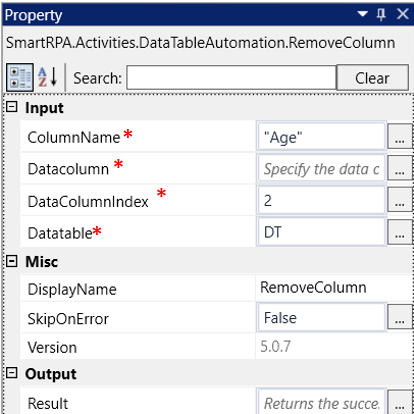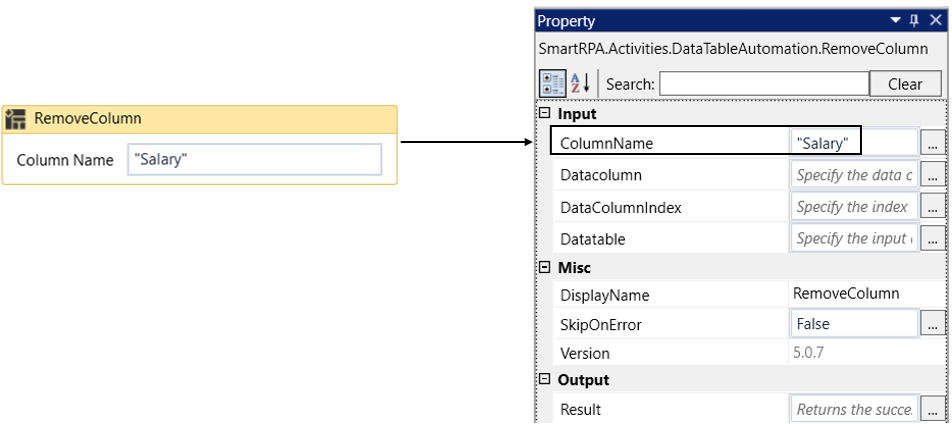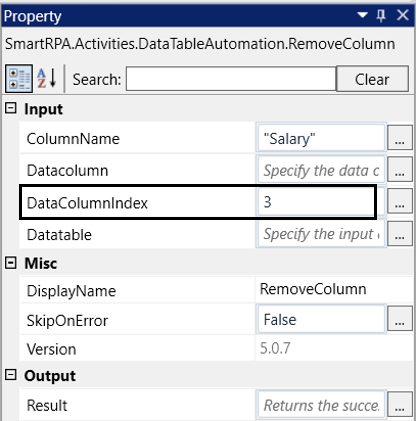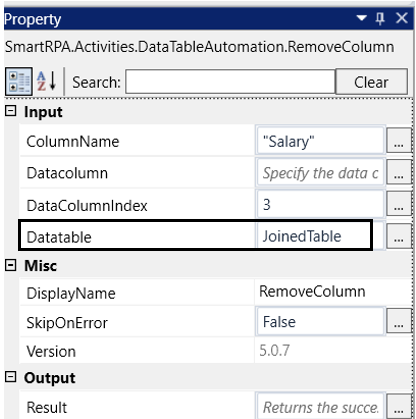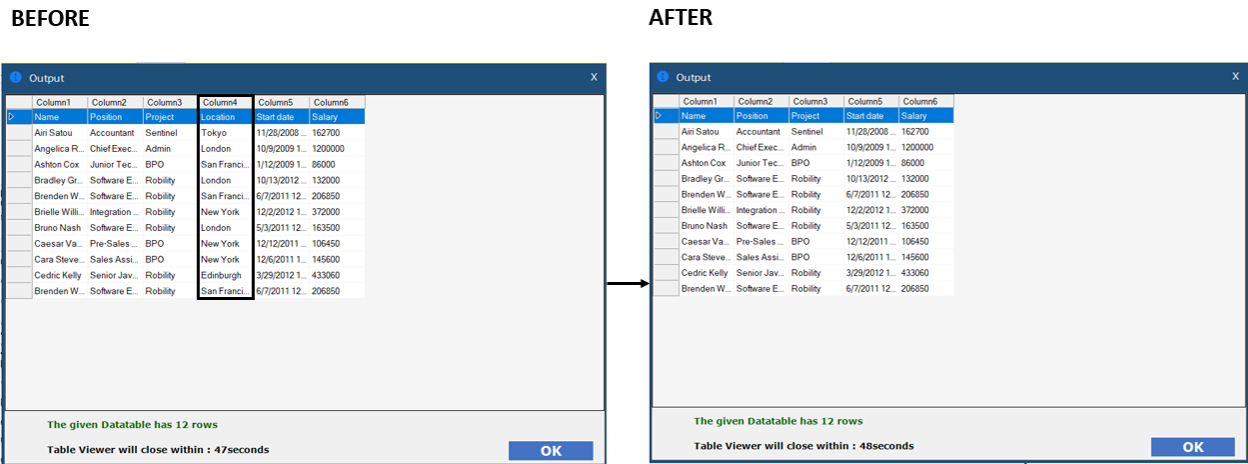This activity helps to remove a specified “Column” from the “Input datatable.”
Technical Reference
|
INPUT |
ColumnName: Enter the "Column name" to remove from the "Input datatable." Provide the column name within double quotes or input the variable in "string" datatype where the column name is stored. This field only accepts data in "String" datatype. If left blank, it will work with the "DataColumn" field if provided. |
|
|
Datacolumn: Enter the “Data column” where the input is stored to remove from the table. You can employ either the "ColumnName (hardcoded value)" or the "DataColumn (variable)" option to remove a column. This field accepts only “Datacolumn” datatype. If left blank, it will work with the "DataColumn" field if provided. |
||
|
DataColumnIndex: Specify the “Index” position of the data column within the “Datatable” that you want to remove. The index position starts from 0. This field accepts only “Integer” datatype. |
||
|
Datatable: Enter the "Input datatable" variable where the input data is stored. This parameter helps you to remove the “Column” from the “datatable”. This field only accepts the "datatable" data type. |
||
|
MISC |
DisplayName: Displays the name of the activity. The activity name can also be customized to help in troubleshooting. |
|
|
SkipOnError: It specifies whether to continue executing the workflow even if it throws an error. This supports only Boolean value “True or False”. By default, it is set to “False.” True: Continues the workflow to the next step None: If the option is specified as blank, by default the activity will perform as “False” action. |
||
|
Version: It specifies the version of the Datatable automation feature in use |
||
|
OUTPUT |
Result: It helps to view the execution state of the activity. It returns the values in Boolean format. True: It indicates the activity has been executed successfully without any error. False: It indicates that the activity has been faulted due to some unexceptional error thrown. |
* Represents mandatory fields to execute the workflow.
Here's an example of how the RemoveColumn activity works –
In the following example, I am using the “Excel sheet” which is used to automate
in the Use case. To get a better understanding, click here.
1. Drag and drop the " RemoveColumn" activity onto the designer pane.
a. This activity can only be utilized after the other “Datatable activities.”
b. It helps to remove the “Column” from the existing datatable.
c. Here I am extracting the output as “Datatable” from the “Excel sheet” using the
“ReadRanges” activity from the “Excel Automation.” (Refer the Use case to get
detailed information).
i. “JoinedTable” is the output for the “datatable” which is declared here.
d. Double-click on the activity to provide the “Column Name” to be removed from
the “Datatable”.
i. Here I am specifying the “Column” header name as “Salary” to be remove from
the table.(Refer the attached excel sheet in the use case)
e. Navigating to the “DataColumnIndex” from the “RemoveColumn” properties
to provide the “Column” position to remove it.
i. The index of the column starts from 0. In this case, the column name “Salary” is
placed as fourth column in the table.
ii. Hence, I am providing the index position as “3” in the field.
f. Moving to the “Datatable” in the properties to provide the input “Datatable” to
remove the column.
i. Here I am using the datatable as “JoinedTable” extracted as output from the
“Excel sheet”.
2. You can add the “Tableviewer” activity to view the output of the “JoinedTable”
datatable.
3. Now I have executed the workflow to remove the column “Salary” from the
datatable.
(Below is the sample of the output, the “Salary” column has
been removed from the table.)
Click here to know how the activity is used in the workflow.
